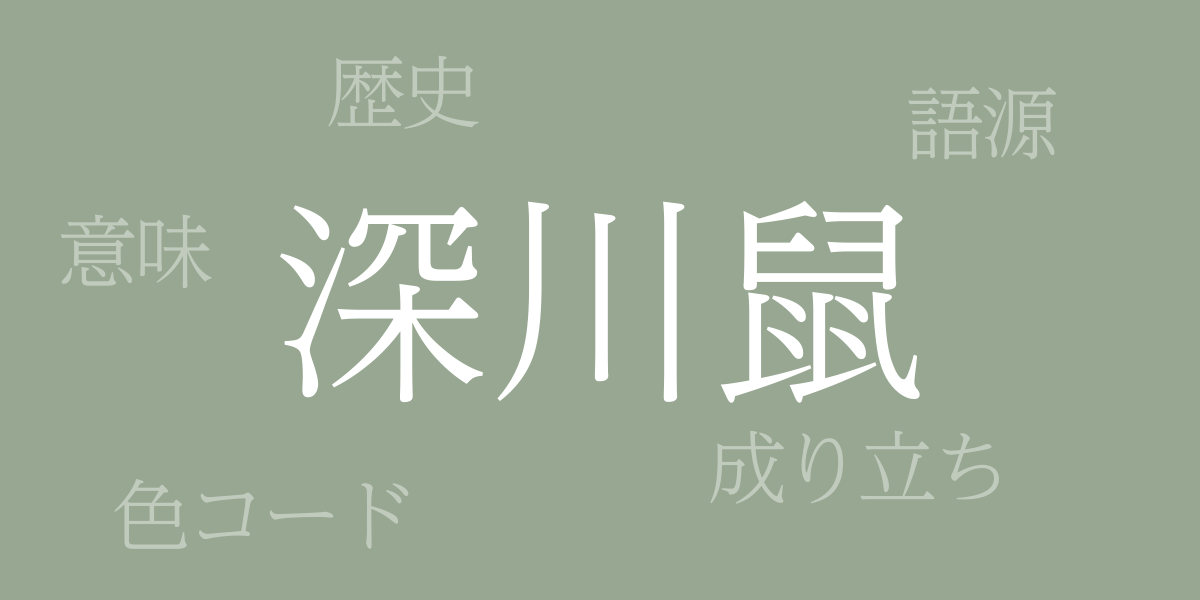Colors sway emotions and narrate culture. The Japanese traditional color “Fukagawa Nezumi (深川鼠 – ふかがわねず)” continues to enchant many with its unique allure. This article delves into the profound world of Fukagawa Nezumi, exploring its history, color codes, and international names, unraveling the significance and beauty this color holds.
About Fukagawa Nezumi (深川鼠 – ふかがわねず)
Fukagawa Nezumi is a traditional Japanese color, characterized by a muted greenish-gray. The name “Fukagawa” derives from an area once present in Edo (now Tokyo), while “Nezumi” means gray in ancient Japanese. This color brings a harmonious, tranquil impression, commonly used in traditional art such as kimonos and Japanese paintings.
The History of Fukagawa Nezumi
The history of Fukagawa Nezumi dates back to the Edo period. The Fukagawa area was known for its concentration of dye workshops, where this color was first created. Adored by people from various social strata—from commoners to samurais and daimyos—Fukagawa Nezumi has become one of the representative colors of Japanese color culture.
Fukagawa Nezumi Color Code
Accurate color reproduction in digital design and web production is crucial. Here are the color codes for Fukagawa Nezumi:
- HEX: #97A791
- RGB: R:151 G:167 B:145
- CMYK: C:47 M:29 Y:45 K:0
International Name of Fukagawa Nezumi
The international name for Fukagawa Nezumi is often directly translated to “Fukagawa Nezumi,” but expressions like “Deep River Mouse” or “Edo Greyish Green” are sometimes used in Western contexts to convey the feel of this subdued color.
Summary of Fukagawa Nezumi
With its unique shade and historical background, Fukagawa Nezumi has established an unshakable position as a traditional Japanese color. In modern times, it is being rediscovered in fashion and design, exuding new allure. The calm and depth this color offers can bring a distinctive atmosphere to any creative work.

























